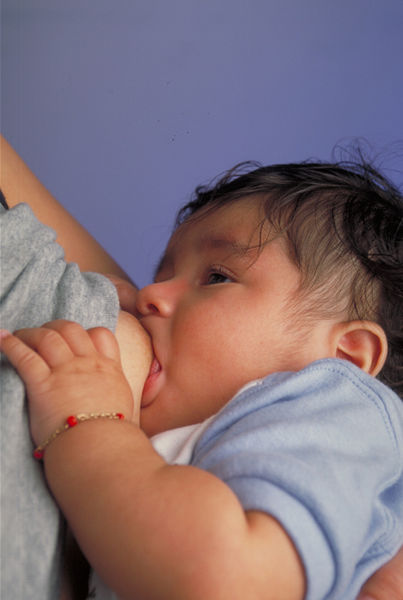Scientists have shown that when mum eats something tasty, so does a breast-feeding baby.
 Although scientists had previously shown associations between maternal diet choices and subsequent food preferences amongst young children, it wasn't known whether this was because the strong flavours of some foods were actually making their way into breast milk. To find out, Copenhagen University researcher Helene Hausner and her colleagues, who have published the work in the journal Physiology and Behaviour, recruited 18 breast-feeding women. After obtaining baseline milk samples, the volunteers were given capsules containing natural flavour chemicals at doses chosen to mimic the amounts that would be present in a normal diet.
Although scientists had previously shown associations between maternal diet choices and subsequent food preferences amongst young children, it wasn't known whether this was because the strong flavours of some foods were actually making their way into breast milk. To find out, Copenhagen University researcher Helene Hausner and her colleagues, who have published the work in the journal Physiology and Behaviour, recruited 18 breast-feeding women. After obtaining baseline milk samples, the volunteers were given capsules containing natural flavour chemicals at doses chosen to mimic the amounts that would be present in a normal diet.
The researchers tested menthol, d-carvone (the flavour in caraway seeds), 3-methylbutyl acetate (which is in bananas) and trans-anethole (which is the strong flavour in star anise, fennel and liquiorice). The participants swallowed the capsules before lunch and milk samples were collected every two hours for the next 8 hours. The "head space" (the air above the milk) was then analysed chemically to measure how much of each of the flavourants was present at each time point.
The results were very surprising and showed that the caraway and liquorice flavours peaked in the milk within two hours of being swallowed; concentrations of menthol rose more slowly, peaking between four and six hours. By eight hours all three had returned to baseline. The banana flavour was not detected in any of the samples.
Intriguingly there was considerable variability in terms of how much of the flavour chemicals ended up in the milk made by different mothers, with differences of over 80% for some of the flavours. Repeating the experiment also produced 50% differences in the same individual, showing that the transfer of dietary constituents to breast milk is highly variable both between and within individuals.
What this does show, however, is that breast feeding may help to prepare infants to accept new food flavours, and preliminary research carried out the Hausner suggests that breast-fed babies are more receptive to new tastes than their bottle-fed counterparts. But probably the most practical value of the study, however, is that mothers can be reassured that whatever they eat it will be gone from their breast milk within 8 hours. So go on, have that curry!










Comments
Add a comment